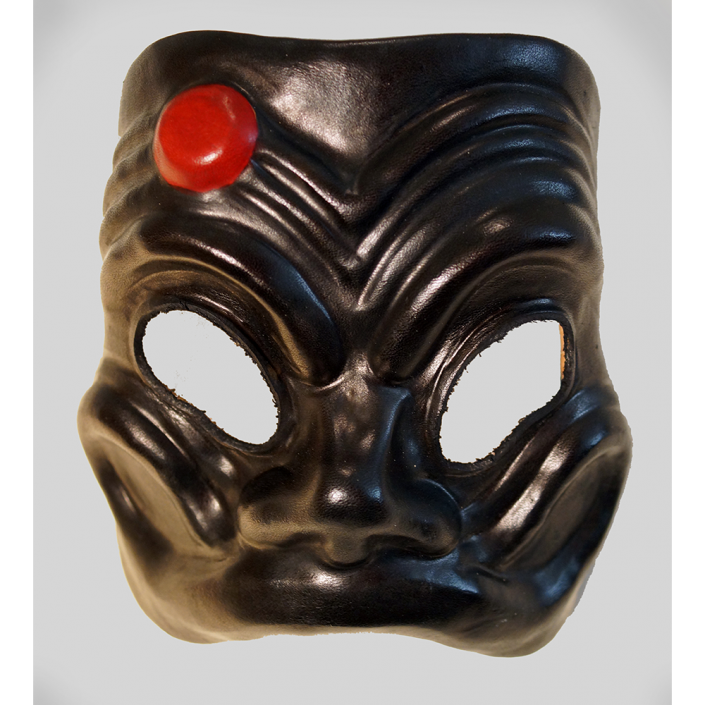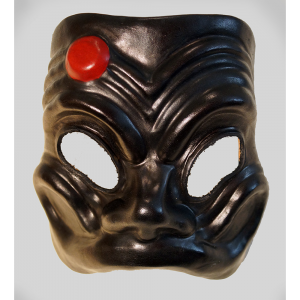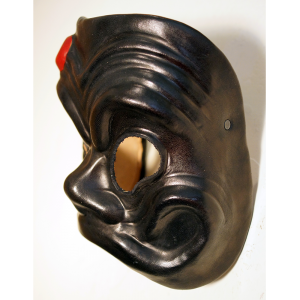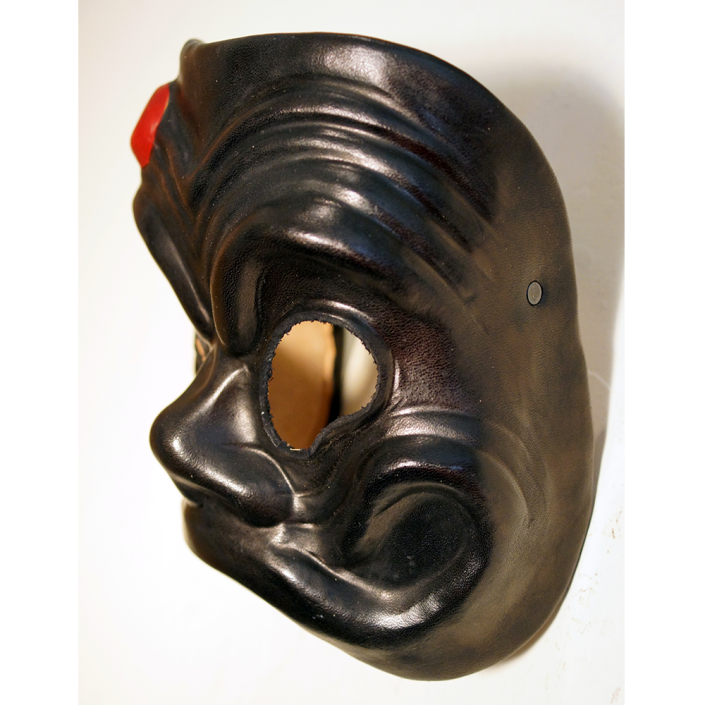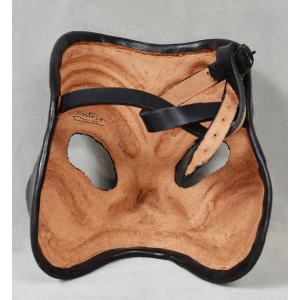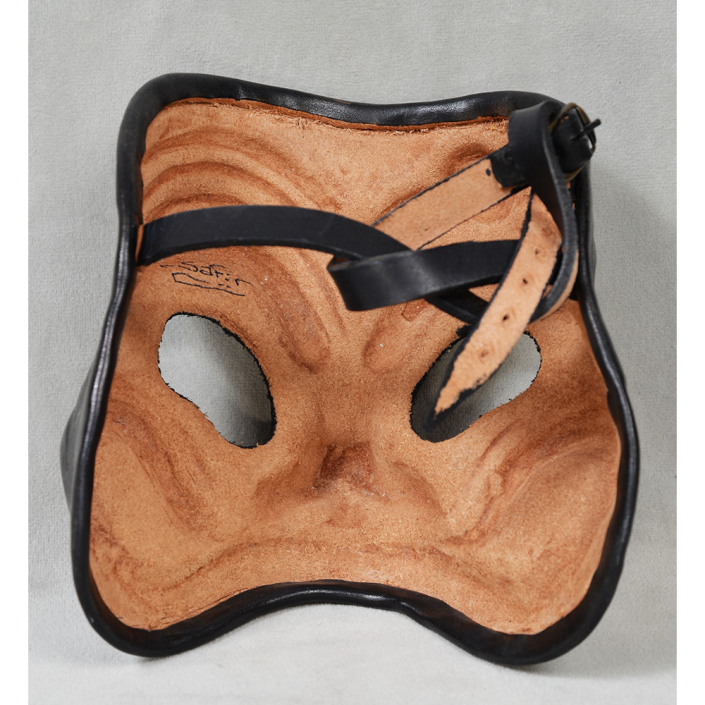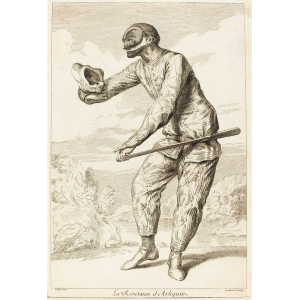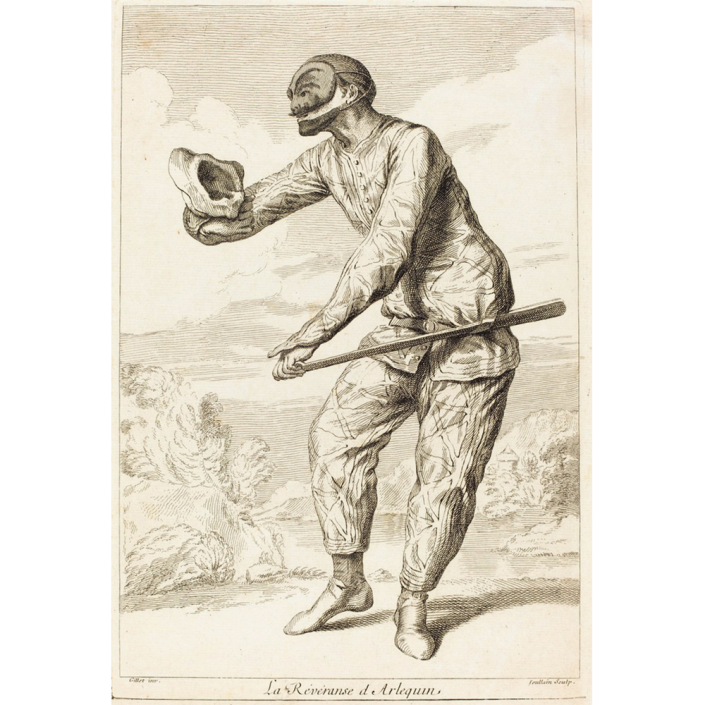TITLE: Commedia dell’Arte Arlecchino
TYPE: face mask
GENERAL REGION: Europe
COUNTRY: Italy
ETHNICITY: Italian
DESCRIPTION: Arlecchino (Harlequin) half mask
CATALOG ID: EUIT001
MAKER: Graziano “Safir” Viale (Lonigo [Vicenza], 1959- )
CEREMONY: Commedia dell’Arte; Carnival
AGE: 2013
MAIN MATERIAL: leather
OTHER MATERIALS: paint; hardware
The Commedia dell’Arte was a form of public entertainment that succeeded the classical Roman theater in Italy. Like classical theater, Commedia performers wore leather masks to represent stock characters and often performed in amphitheaters to large audiences. However, the Commedia differed in having only a very basic plot sketch, with most of the lines invented extemporaneously by the actors. The Commedia‘s ability to stay topical and its frequent resort to vulgar humor, combined with the considerable talent of Italian troupes that traveled throughout Europe, made this form of theater extremely popular throughout the early 17th to late 19th centuries. Masked actors had to compensate for their inability to convey facial emotion through posture, gesture, and vocal nuance.
Arlecchino, known in English as Harlequin, was long a popular stock character of the Commedia. His always wears a black half mask with quizzically arched eyebrows and a wrinkled forehead. Originally, his costume was a peasant’s shirt and long trousers, both covered with patches to indicate poverty. It later developed into a stylized, tight-fitting suit decorated with colorful triangles and diamond shapes. Arlecchino also began carrying a batte, or slapstick, at some point. The character represents a witty and capricious gentleman’s valet, amorous of the serving maids and sometimes clownishly credulous.
To learn more about Commedia dell’Arte, see Pierre Louis Duchartre, The Italian Comedy (Dover Pubs., 1966).
